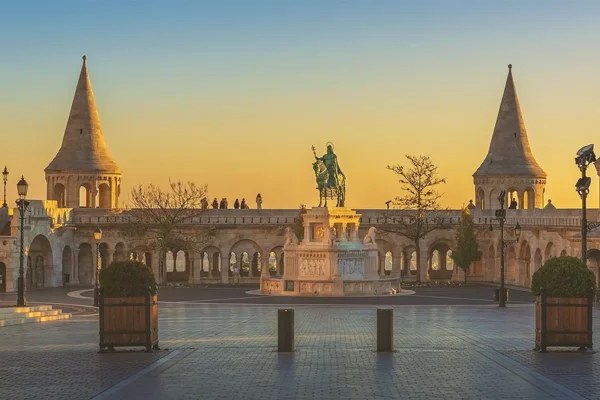Why Visit Fisherman's Bastion?
Offering panoramic views, charming architecture, and a quaint, village atmosphere.

Fisherman's Bastion (Hungarian: Halászbástya) is one of Budapest’s most beloved landmarks, drawing visitors with its fairytale-like towers, sweeping views of the Danube River, and proximity to other iconic attractions such as Matthias Church and Buda Castle. Perched atop Castle Hill in the Buda district, the Bastion offers both historical intrigue and architectural elegance.
Fisherman's Bastion is not just a lookout point; it’s a gateway to the imagination. With its magical towers, rich symbolism, and unforgettable views of Budapest, it continues to be a highlight of any visit to Hungary’s capital. Whether you’re a history lover, architecture enthusiast, or casual traveler, the Bastion offers a unique perspective on the beauty and story of Budapest.
History and Origins
Despite its medieval appearance, Fisherman’s Bastion is relatively modern. It was constructed between 1895 and 1902 as part of a grand project to celebrate the 1000th anniversary of the Hungarian state, commemorated in 1896 during the country's Millennium celebrations.
The Bastion was designed by architect Frigyes Schulek in the Neo-Romanesque style, and it sits on the foundations of the old Buda city walls. The name "Fisherman’s Bastion" is believed to originate from the guild of fishermen who were responsible for defending this stretch of the wall during the Middle Ages.
Architectural Features
Fisherman's Bastion is renowned for its whimsical, storybook architecture. It features:
- Seven conical towers representing the seven Magyar tribes that founded Hungary in 895 AD.
- Elegant staircases, arcaded walkways, and scenic terraces.
- White stone construction with Neo-Romanesque columns and arches.
- Balustrades and turreted lookouts that give it a castle-like feel.
The Bastion is not a defensive fortification, but rather a decorative viewing terrace designed to enhance the beauty and prestige of the Buda Castle District.
Statue of St. Stephen
Near the central terrace of Fisherman's Bastion stands a commanding equestrian statue of King Saint Stephen I, the first king of Hungary. The statue, erected in 1906, is a tribute to Stephen's pivotal role in founding the Christian state of Hungary.
The bronze statue was created by sculptor Alajos Stróbl and stands atop an ornate pedestal decorated with bas-reliefs depicting scenes from Stephen’s life.
Panoramic Views
One of the main draws of Fisherman’s Bastion is the panoramic view it offers over the city of Budapest. From the terraces, visitors can see:
- The Hungarian Parliament Building reflected in the Danube.
- The Chain Bridge, linking Buda and Pest.
- The spires of Pest’s churches and the hills in the distance.
It is especially magical at sunrise or sunset, and at night when the city lights up below.
Fisherman’s Bastion and Matthias Church
Adjacent to Fisherman’s Bastion is the magnificent Matthias Church, officially named the Church of Our Lady. With its colorful Zsolnay tile roof and detailed Gothic architecture, it is a perfect complement to the Bastion’s whimsical design. Together, they form one of the most photogenic spots in Budapest.
Visitor Information
- Location: Szentháromság tér, 1014 Budapest, Hungary
- Opening Hours: Open daily; lower terraces are free and always open; upper terraces may charge a small fee during the day.
- Best Time to Visit: Early morning for tranquility or evening for golden hour photography.
- Accessibility: Accessible via Castle Hill Funicular or by bus (Line 16). Some areas may have limited accessibility due to stairs.
Fisherman’s Bastion in Popular Culture
Thanks to its unique look and cinematic appeal, the Bastion has appeared in travel shows, films, and countless Instagram feeds. It’s a favorite backdrop for wedding photos, engagement shoots, and travel vlogs. Its whimsical charm and romantic aura make it a dream destination for photographers and dreamers alike.



